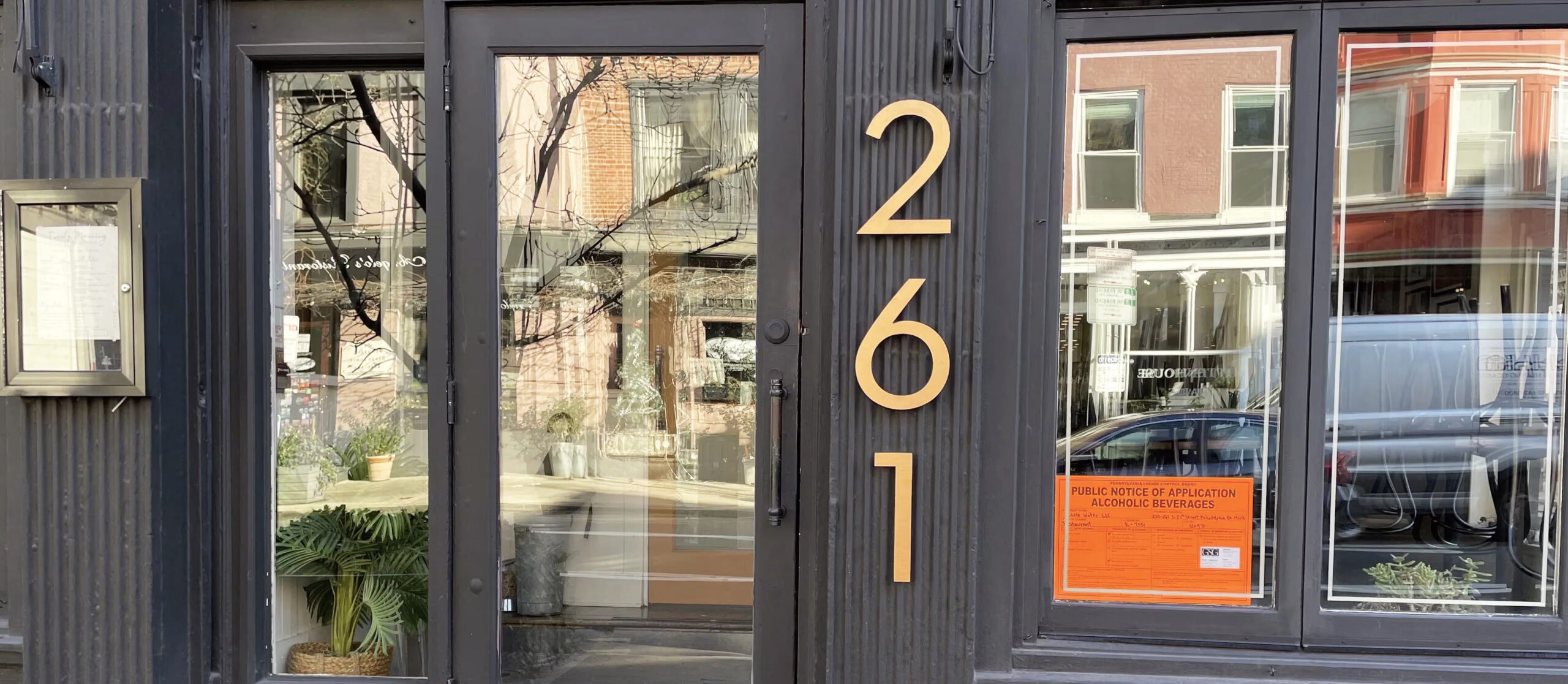There’s a funny story, and a new friendship, behind the forthcoming restaurants Little Water and Little Walter’s. How do restaurants get their names, anyway?
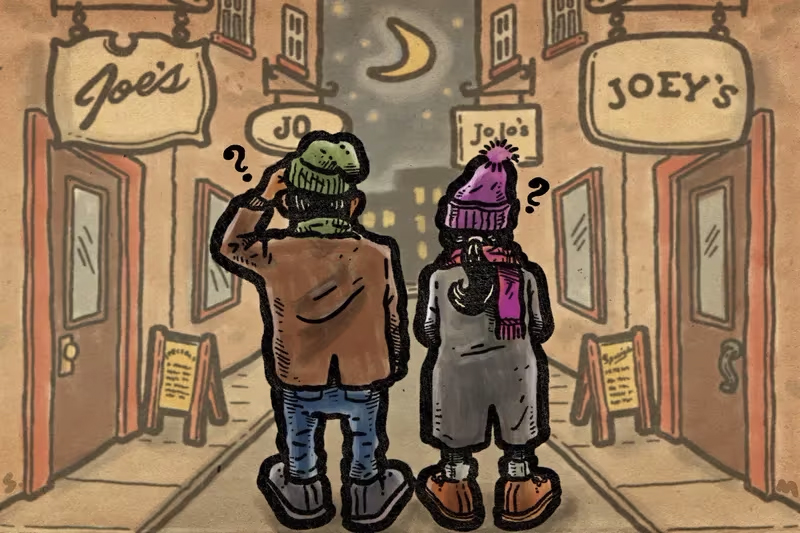
Michael Brenfleck was feeling fine as he tooled along Columbus Boulevard through the rain on Jan. 9. He had just given notice at his chef’s job. The plan for his own restaurant in East Kensington was kicking into gear. He stopped for a light and tapped open the Instagram app on his phone.
What he saw, he said, “gave me a mini heart attack.”
A post announced that Randy and Amanda Rucker of the restaurant River Twice would open their second restaurant this summer. Its name, Little Water.
The name of Brenfleck’s restaurant, to be announced two days later, is Little Walter’s.
“I freaked out,” Brenfleck said.
He drove to River Twice in South Philadelphia and met a mildly confused but utterly unconcerned Amanda Rucker, who talked him down. “She’s like, ‘Dude, it’s Water. Not Walter’s,’ ” he said. “ ‘Don’t worry.’ ”
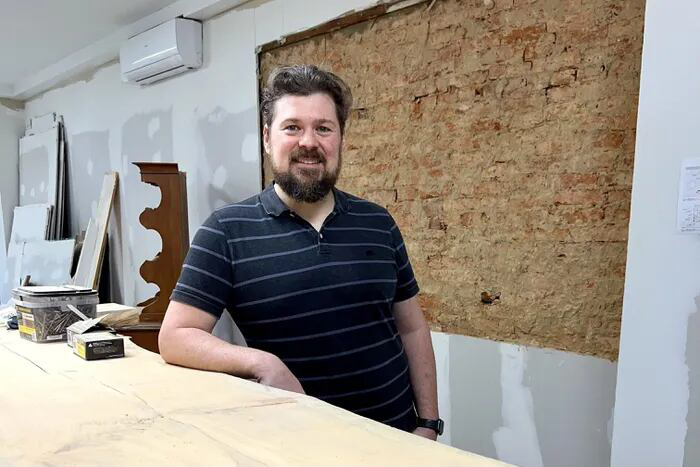
Michael Brenfleck behind what will be the bar at Little Walter’s, the restaurant he is building at 2049 E. Hagert St.
They’re named after people, pets, foods, homelands, slang terms, foreign words, flowers, idioms, and even rodent characters in British fiction (Rat’s in Hamilton Township, N.J., after Ratty in The Wind in the Willows). With nearly three-quarters of a million restaurants in the United States, of which about one in five is a single-location, full-service business, there are a lot of names out there.
And yet, so many seem similar.
Fiore, which recently moved from South Philadelphia to Kensington (down the block from Fiore’s Shakes & Steaks), is not to be confused with Fiore Rosso in Bryn Mawr, Il Fiore in Collingswood, Fiorino in East Falls, or Fiorella in South Philadelphia, which borrowed the family name behind a century-old butcher shop.
There’s Craftsman Row Saloon, Craft Hall, Crafty Crab, Crafty’s Taproom, and if you’re feeling even kraftier, there’s Kraftwork.
There is a Roman pizzeria called Alice — pronounced “ah-LEE-chay” — in Center City, only a mile from an American bistro called Alice — as in “go ask” — in South Philadelphia.
Oishi, a ubiquitous name, means “tasty” in Japanese, hence Oishi Sushi, Oishi Ramen, Oishii Poke, Oishi Yakitori Sushi, and Oishii Sushi & Ramen.
This year’s crop of James Beard Award semifinalists includes the Shipwright’s Daughter in Mystic, Conn., Best Quality Daughter in San Antonio, Texas, and the Obstinate Daughter in Sullivan’s Island, S.C. But there’s only one “son” this time out: Crawford & Son from Raleigh, N.C.
Or join the march of the ampersands, a breed of bars linking disparate nouns and repurposing old barn lumber and church pews: Butcher & the Brewer, Fork & Barrel, Cook & Shaker. the Butcher & Barkeep, Brick & Barrel, and Brick & Brew.
The name game
Restaurants long ago bore the name of the owner, and that was it. Ma and Pa McGillin opened Bell in Hand Tavern on an alley near City Hall in 1860, and eventually it became known as McGillin’s. (They added “Olde Ale House” after it genuinely had become olde. It’s still one of the oldest restaurants in the country.)
Some other classic Philadelphia names reflect the founders: Samuel Bookbinder (Bookbinder’s), Pat Olivieri (Pat’s King of Steaks), Jim Perligni (Jim’s Steaks), Giovanni Tacconelli (Tacconelli’s), Ralph Dispigno (Ralph’s).
Over the years, food entrepreneurs started naming their businesses after their children and other family members. Aimee Olexy and her then-husband, Bryan Sikora, used the middle name of their daughter, Annalee Talula Rae, for what are now Olexy’s restaurants Talula’s Table, Talula’s Garden, and Talula’s Daily. Suraya in Fishtown is Suraya Harouni, grandmother of founders Roland Kassis and Nathalie Richan. Kalaya in Fishtown is the mother of chef-partner Chutatip “Nok” Suntaranon.
In 2000, Lisa Calvo started a New Jersey oyster farm and named it for her toddler daughter, Amalia. She and a partner added a farm stand in Gloucester County. Accolades for Sweet Amalia Market & Kitchen followed — and then last year, so did Sweet Amelia’s, a restaurant in Kennett Square, which married owners Zack Hathaway and Karessa Hathaway named after their little girl.
Hathaway told The Inquirer’s Craig LaBan that he was unaware of the potential name conflict until someone from Sweet Amalia called him as he was literally hanging his sign. “It’s not lost on me their frustration. I’m empathetic to the difficulties of building a name,” Hathaway told LaBan. “But I depleted my bank account opening this. I can’t rebrand now.” The confusion seems to have died down, as Sweet Amalia is closed for the season. It’s also a good thing that they are in two states, 50 miles apart. Just watch your vowels.
What makes a good restaurant name?
Although many restaurant owners dig into a thesaurus or family tree, others turn to a pro to come up with a name.
“I think a great name is one that’s memorable and easily pronounceable phonetically,” said Antoinette Marie Johnson of Cohere, a Philadelphia branding company that worked with the creators of such restaurants as Post Haste, the Wayward, Bar Bombon, and the Stephen Starr ghost kitchen Jackass Burrito.
The key, Johnson said, is research. Our world is driven by search-engine optimization. Common words get lost out there. There is also a need for what Johnson calls a “phonetic clarity and distinctiveness.”
In other words, can you say the name and is it unique? Cohere listens to the client’s goals and then scours sites such as Instagram, Google, and Yelp to guide brainstorming and to “explore connotations and historical context.”
It’s important to determine “how the user will hear and say it, how the user will find it, and what story it lends to.” Next, Cohere checks social-media handles, domains, and trademark databases. A quick, $200 consultation with a trademark lawyer can be beneficial.
“They provide crucial insights, highlighting acceptability concerns even with minor spelling differences,” Johnson said.
Then comes what she called “human intelligence.”
“We rely on the hospitality community at all levels to give us ‘insider information,’ ” Johnson said. “We talk to brokers, other chefs, and emerging talent and ask them about what they know is happening in restaurants even before the public knows. Usually, they’re quite involved or at least aware of what their clients are planning to do.”
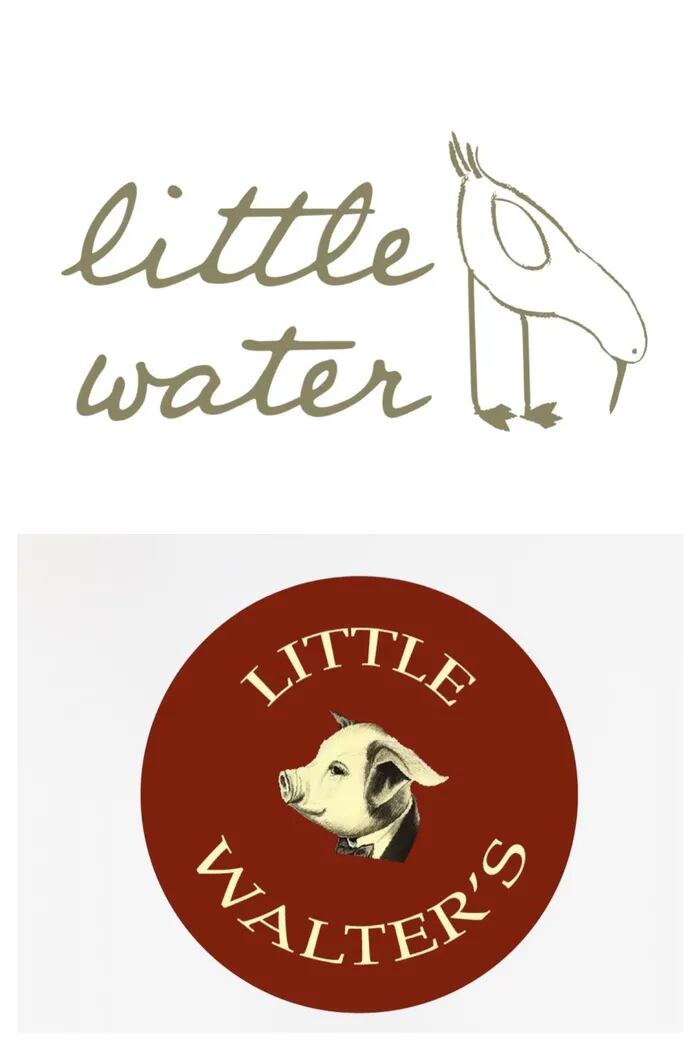
The logos of Little Water (opening at 261 S. 20th St.) and Little Walter’s (opening at 2049 E. Hagert St.).
That said, many restaurants are conceived quietly, outside of the bubble of real estate brokers, vendors, and nosy reporters. Little Walter’s Brenfleck shared word of his project with only a few friends, as he had to keep working to support himself. He began work at a former corner bar at 2049 E. Hagert St. in East Kensington. Name selection can be among the last decisions, anyway.
Brenfleck will build his menu around the Polish American staples of his childhood. “I was really struggling with the name for a while, looking for something that meant something and also gave it some identity,” he said.
He initially liked Smacznego, which means “enjoy your meal” in Polish, but realized that spelling and pronunciation could be an issue to someone punching it into a ride-share app, or simply saying it.
Then came the lightbulb moment. He remembered his grandfather Walter — “who was maybe 5′5″ at his tallest and then got shorter as the years went on.” Coupled with one of his favorite songs, “Little Walter Rides Again” by Medeski Martin & Wood, “it just fit.” He hopes to open in May.
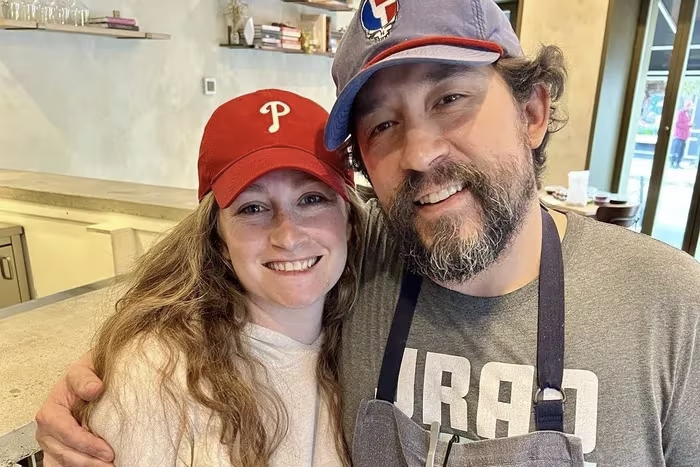
Amanda and Randy Rucker, owners of River Twice.
The Ruckers, who said they wish Brenfleck well, said they came up with Little Water before River Twice, which opened on East Passyunk Avenue in 2019. (That name came from Greek philosopher Heraclitus’ quotation: “No man ever steps in the same river twice, for it’s not the same river and he’s not the same man.”)
While they were living in Connecticut the year before, they were thinking about opening a restaurant in New Jersey. In learning the history of New Jersey, they said they were struck by the meaning of “Little Water,” which is derived from the name Absecon. The word “Absegami,” or little water, came from the Lenni-Lenape living along Absecon Creek, among the first inhabitants of what is now New Jersey.
“ ‘Little Water’ resonated with us in the duality of our own experience living among the water,” they said. “We met when we both were living along the Gulf Coast, then moved to Martha’s Vineyard and during our time in Connecticut we lived on two small bodies of water, Wequetequock Cove and the Niantic Bay. The name ‘Little Water’ ties in the mid-Atlantic region.”
Though plans shifted, “Little Water always remained a vision, and when [real estate broker] Veronica Blum [of MPN Realty] shared with us Twenty Manning [at 261 S. 20th St.], we knew we could bring it to life there.”


